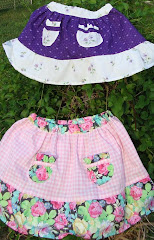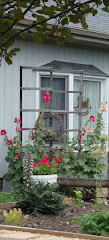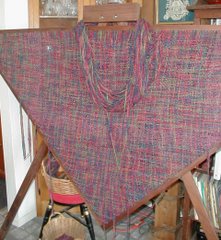 Stopped at the grocery the other day to get olive oil (50% off regular price--YAY!) and found they had two pound bags of organic carrots marked down to 50¢. The store often has fresh produce marked down as it "ages" but those carrots looked as good as (if not better than!) the ones in my refrigerator crisper at home. So I bought 10 pounds.
Stopped at the grocery the other day to get olive oil (50% off regular price--YAY!) and found they had two pound bags of organic carrots marked down to 50¢. The store often has fresh produce marked down as it "ages" but those carrots looked as good as (if not better than!) the ones in my refrigerator crisper at home. So I bought 10 pounds.When I got home I set DS to washing, then peeling them. I put a big pot of water on to boil and pulled out a knife and cutting board. DH brought the dehydrator in from the garage where it's stored in the off season.
First the peels went in the dehydrator on three shelves. Once upon a time I would throw them in the compost, then I learned to put them in a bag in the freezer along with onion skins and celery trimmings. Those vegetable scraps make an excellent addition to chicken broth fixings. When the broth's ready, I just strain out the cooked vegetables and then they go to the compost pile.
But having a dehydrator has changed that. Now when we need to peel more than a couple of carrots (the chickens get the small amounts) or other vegetables like onions, I dry the peels and grind them to make vegetable powders. You know, the basis for those seasoning blends that can cost a dollar an ounce at the store.
So this week, $5 worth of carrots (10 pounds) yielded 4 ounces of dried carrot peelings (small jar on right in photo) and right at 20 ounces of diced dried carrot pieces (quart jar on left in photo). I blanched the diced carrot before drying but not the peels. The pieces are perfect for adding to soup.
The peels were dried in their long form, just as they came from the carrots, but I crumbled them after drying to reduce their volume. Once I'm ready to use them in powder form, I'll either crush with the pestle and mortar or run them through a little electric coffee grinder. When I first started drying vegetables suitable for making powder, I made them into powder as soon as they were dry. But I don't add any anti-caking agents such as may be found in many store-bought salts or seasoning blends and even though I might vacuum seal the jars, I found the powder could make like a rock and become so hard I had to chip it out of the jar.
Dehydrating the carrots was a good warm-up for the coming growing season. Now that the dehydrator's out on the counter again I'm thinking about what else I want to preserve. There's rhubarb ready to pick and we're out of fruit leather so I think a batch of rhubarb juice for punch and the remaining pulp for fruit leather is a good idea. Also plan to can 10-15 pounds of dry pinto beans and a smaller amount (3 pounds?) of black beans later today. Just seemed like the thing to do as I have a ham bone to use up in the pintos and if I get out the canner for them I might as well do the black beans, too. So back to the kitchen for me...





















4 comments:
What an excellent idea to share!
I use my dehydrator not nearly enough. Would you mind sharing what fruitleather is and how u use it?
Really smart, Carolyn, and you've made me hungry, so I just got out my lunch I brought, and sliced strawberries here, so I could eat while reading. I'm thinking how good soups etc are going to be with all that. Yum.
I never thought about grinding the dried nuggets. Frankly, I never thought of drying the carrots but what a super idea and now I feel dumb for never having considered it! Carrots are the veggie that go limp and ick pretty quickly if you forget about them. They're also often on sale. I prefer drying to freezing because hey, no storage concerns. I'm going to have to keep an eye open for another dryer. I found one for $5 at a thrift store several years ago but moved and gave it away. NOW I'm sad about that. Thanks so much for the idea!!!
Haven't forgotten about the fruit leather, alke. Hope to put some in the dehydrator AND post tomorrow.
Post a Comment